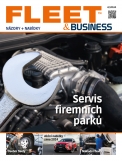Real-time transactions don't have a new look in any way by any stretch of the imagination. Diablo 2 Resurrected didn't pioneer them however it would be insincere to make that claim as reality. Blizzard's action-RPG isn't the root cause, but instead the most savage amalgamation of free to play mobile and PC games. Two different Battle Passes each with different rewards, each exclusive to your character (and not your overall roster) and D2R Items too many different currencies for a typical player to keep track of, Diablo 2 Resurrected's economy reads like a mobile marketplace monstrosity.
The practices, even if they're opposed, have become normalized within the entire industry. One could argue that the use of loot boxes and other real-money transactions within AAA games has created this type of predatory economy -- but the more AAA gaming shifts to the games-as a service model, the more it has in common with the mobile gaming that has existed within this extremely popular sphere for almost a decade.
And this isn't just apparent in the use of money to purchase items however, it is also evident in gacha mechanics as well as in the information about drop rates in rarer items. Gacha is using game currency, whether it's free, or purchased through an in-game shop to acquire something random items, such as equipment pieces in the case of Dissidia Final Fantasy Opera Omnia or characters from the ever-popular (and persistant) Fate/Grand Order or Genshin Impact.
In Diablo 2 Resurrected's case, there's the usage of legendary crests (which can be earned or purchased) to increase the odds of a five-star gem appearing in the dungeons at the end of the game. While not entirely traditional in its approach to presentation (most gachas are played by "rolling" on a limited-time banner), players are still playing randomness that they are used to in other games in the same manner. In many ways this is how it's like the Diablo game has been working towards these sorts of mechanics since its beginnings, such as Maddy Myers wrote a few weeks back.
Diablo 2 Resurrected also, in the simplest terms, takes direct inspiration from a "feeding" mechanism that Japanese, Korean, and Chinese mobile games have used for over a decade. "Feeding" involves increasing the attributes, stats or the rarity of an item by getting a duplicate of a drop. These duplicates then are fed to an item with similar rarity to boost the overall stats of said item. Generally five copies are needed according to industry standards to max out a character or item.
My first exposure to "feeding" was in Fate/Grand Order, which was first launched on Japan in July 2015 and brought in a total of $4 billion dollars globally in 2019. To create a character that was the best that it can be I had to purchase duplicates of each. Then, when a particular campaign came around I paid upward of 300 euros for the character I'd wanted for years. However, I was unable to obtain the exact copies I required to fully appreciate this character's full potential. The rates for the highest-rated 5-star characters averaged at around 1.1%, it's no surprise that I was unable to obtain a duplicate of the character when I was enjoying the game (which I've since uninstalled). As of July 2021, Fate/Grand Order was the seventh highest-rated mobile game of all time, sitting just behind Konami's Puzzle and Dragons, which may be of cheap D2R Ladder Items interest, since it is also a gacha-based game.



